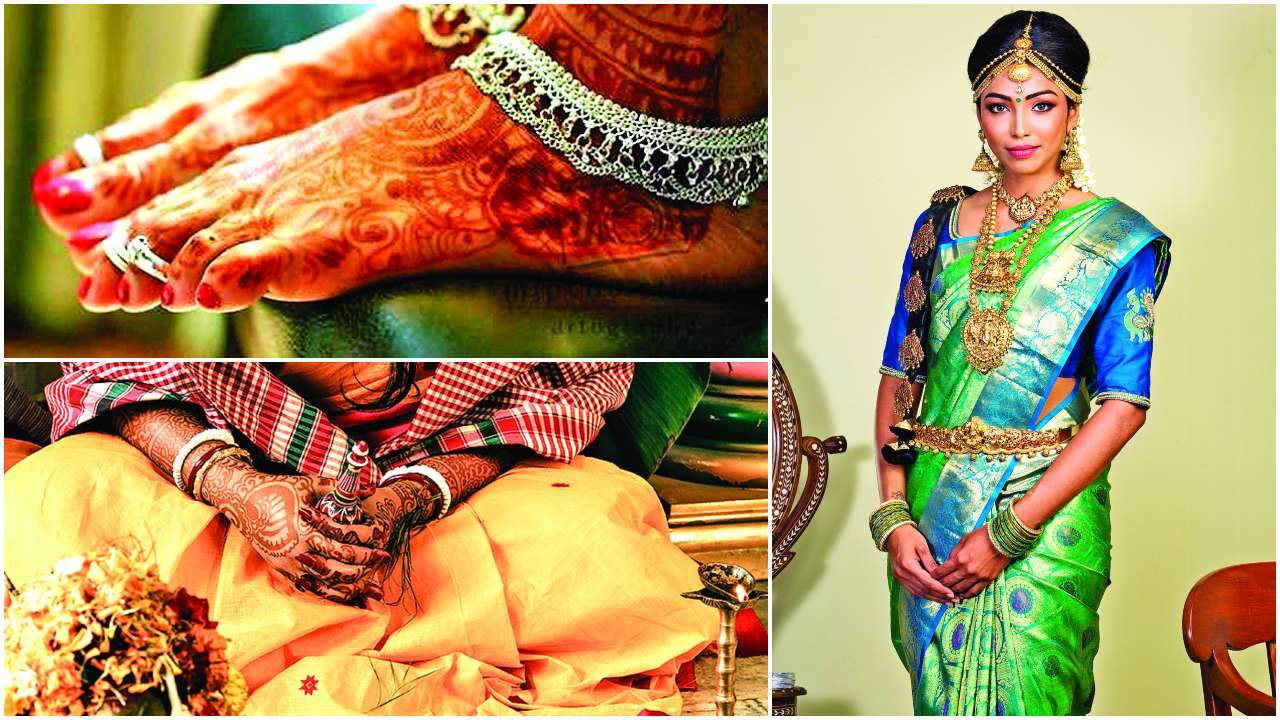
Indrabati Sarkar vividly remembers the time she was mistaken for a married woman on a visit to the gynecologist in Hyderabad. A Masters student at the time, marriage and pregnancy had been the furthest things from Sarkar's mind when she had gone for a PCOS checkup. The mix-up, and the following ultrasound to check up on the health of her non-existent baby happened because she happened to be wearing a toe ring. "So, they automatically assumed that I am married, since married women in Telangana and Andhra Pradesh wear toe rings," she laughs, recalling the incident. "They were even more confused since I wore only one toe ring, so they wondered if I was divorced or something and had kept one ring out of some sense of irony."
Hailing from Kolkata, Sarkar, who is now on her way to tie the knot this year, would be more familiar with a different set of jewellery that would set her apart as a 'bride'. "In Bengal, daughters-in-law are gifted iron bangles usually plated with gold and worn with red glass bangles," lists Siddhartha Sacheti, CEO of Jaipur Gems. "Shahkha are white bangles made from conch shells that are often engraved with beautiful carvings. Pola are red in colour because these are made from red corals. These two bangles are the most common marriage symbols for Hindu Bengali women, and are supposed to be worn on both hands."
These supposedly ward off the evil eye and are traditionally worn throughout the bride's wedded life. There are also customs that say that the bride should be careful not to break these fragile bangles during the first year of marriage lest evil should befall her husband.
While wedding rings, choodas and mangalsutra have been popularised to the point that some even wear these pieces of jewellery for the sake of fashion, there are many that not all know about. Some, like toe rings in the South and West of India are also not unheard of. But Sacheti adds that the connotations of these rings are more layered than one would initially believe. "Unmarried women wear lighter and plain rings as compared to married ones, who wear embellished ones with different stones and in pairs on the second toe of each foot," he explains, adding that these rings are traditionally believed to increase the chances for conception. In many South Indian states, women also wear a U-shaped ring (either plain gold or studded with gems) to symbolise their marriage. Like the bangle passed down to the daughter-in-law in Bengali rituals, this ring is also often an heirloom gifted by the in-laws. The vaddanam or kamar bandh is probably the heaviest piece of jewellery used by married women in this region, and is, understandably, only worn on auspicious days.
The Devgaon ceremony in Kashmir is another lesser-known tradition wherein the bride is given Dejhoor for the ears by her mother. These are hexagonal ear adornments with a small circle in the centre that dangle from the upper cartilage part of ear. On the day of Devgaon Nairwan, the gold ornament hangs from a red thread. When the bride goes to her husband's home, this is replaced with gold or silver thread (atah). The athoo, a small ornament that dangles below the Dejhoor is also added to the ornament. A testament to the age-old tradition can be found at the SPS Museum in Srinagar, Kashmir, where a 10th-century stone stature called the Birth of Buddha finds his mother Mayadevi and his sister Prajapati wearing it.
With time, many pieces of jewellery originally worn only by married women have come to become simply pretty pieces worn by all. Many can be seen sporting payals, for instance, that were meant to announce the arrival of a new bride in her husband's home or the age-old nath, which, Sacheti says has the benefit of easing menstrual and child-birth pains (according to ayurveda).
Perhaps that is the ultimate goal any jewellery should strive for – beauty without hidden meanings that bind the wearer to redundant or patriarchal customs.